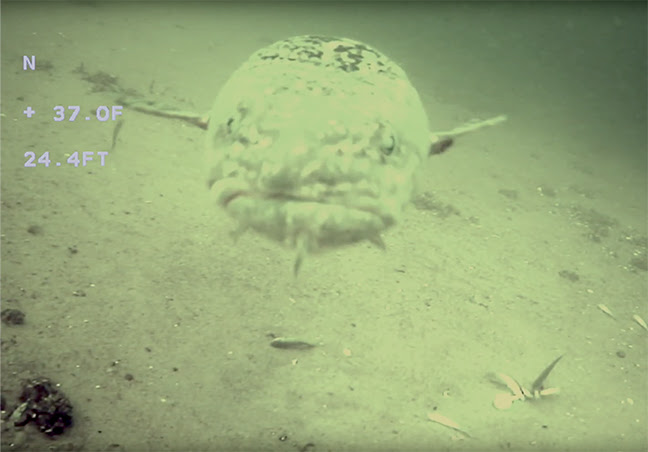
|
Rare Behavior on Video |
|
Aqua-Vu® HD Cameras capture mysterious burbot rituals |
|
Crosslake, MN – Burbot might as well be the groundhogs of the fish world. Each winter, almost like clockwork, burbot (aka eelpout) suddenly become common catches among ice anglers in the northern reaches of the U.S. and into Canada and Alaska. Intriguing about the enigmatic eelpout is that for the rest of the year, no one particularly knows where they go. We know that the species’ circumpolar natural range stretches from the Great Lakes to Alaska and across the Bering Strait to Europe and Asia, excluding the United Kingdom, where they’ve not been captured for nearly half a century. We also know that during late winter, adult burbot begin assembling en masse, spawning on sand and gravel substrates while ice still covers the lake. That’s when anglers encounter and increasingly target them. There’s a movement afoot, particularly among adventurous ice anglers like Saskatchewan fishery scientist Jeff Matity, to learn more about the burbot; to study them through the lens of an Aqua-Vu underwater camera; to discover where and how to catch them; and finally, to appreciate and release the larger, older burbot to swim and spawn once again. |
|
But not all anglers who chance upon burbot appreciate them. For the eel-like fish likes to greet us with a slightly amusing, friendly bark and by “hugging” our forearms with its slimy, sinuous tail. Nevertheless, everyone seems to find them fascinating to observe with an underwater camera. When burbot assemble to spawn late each winter, we marvel at their large gregarious assemblies, their spectacular mottled flanks and the impressive energy they display within seemingly tranquil underwater environs. Recently, Jeff Matity and his brother Jason witnessed and captured an intriguing underwater episode involving a large predatory pike, a 2-pound burbot and perhaps never-before-seen fish behavior. “This particular morning, we had caught some walleyes at Saskatchewan’s Qu-Appelle Valley lakes,” recalls Jason Matity. “Over the course of the day, we’d lost a few minnows to the bottom—baits that fell off the hooks of our ReelBait Flasher Jigs. “After about two hours, our fishing area contained enough minnow bits on the bottom to attract a burbot. Initially, it swam in to inspect our lures, but found the pieces of minnow on the bottom more to its liking. After a few minutes of feeding, we watched on the Aqua-Vu as the burbot turned and locked eyes with a large, trophy-class northern pike that seemed to be stalking it, sizing it up for its next meal. “Performing what must have been one of its only predatory defense techniques, the burbot quickly rolled in the bottom substrate and literally muddied the water to block the pike’s visibility. Soon, the pike lost interest and swam away, the burbot having smartly saved itself from becoming lunch.” |
|
Aqua-Vu HD10i Pro Underwater Viewing System |
|
Matity and his brother witnessed and captured the entire sequence of events with their Aqua-Vu HD10i Pro Underwater Viewing System, later uploading the footage to their YouTube Channel, Matity’s GetFishing. “After ultimately fending off the pike, the burbot exhibited some unusual ‘tasting’ behavior,” adds Matity. “We watched as the fish sampled one of our baits— a ¼-oz Jig-A-Whopper Hawger Spoon with a minnow—by sliding its head and nasal pores up and down the offering. Eventually the fish decides it’s the real deal, and takes a bite.” To witness the entire underwater drama, click here. “They’re absolutely delicious on the dinner table,” Matity says. “Some folks call them freshwater or poor-man’s lobster. But they’re actually aquatic indicator species, highly sensitive to changes in water quality. It’s just one reason we strongly encourage the harvest of one or two small fish only, while releasing the larger spawning specimens to swim and treat us to more rounds of astonishing underwater behavior.” |



 Advertising
Advertising